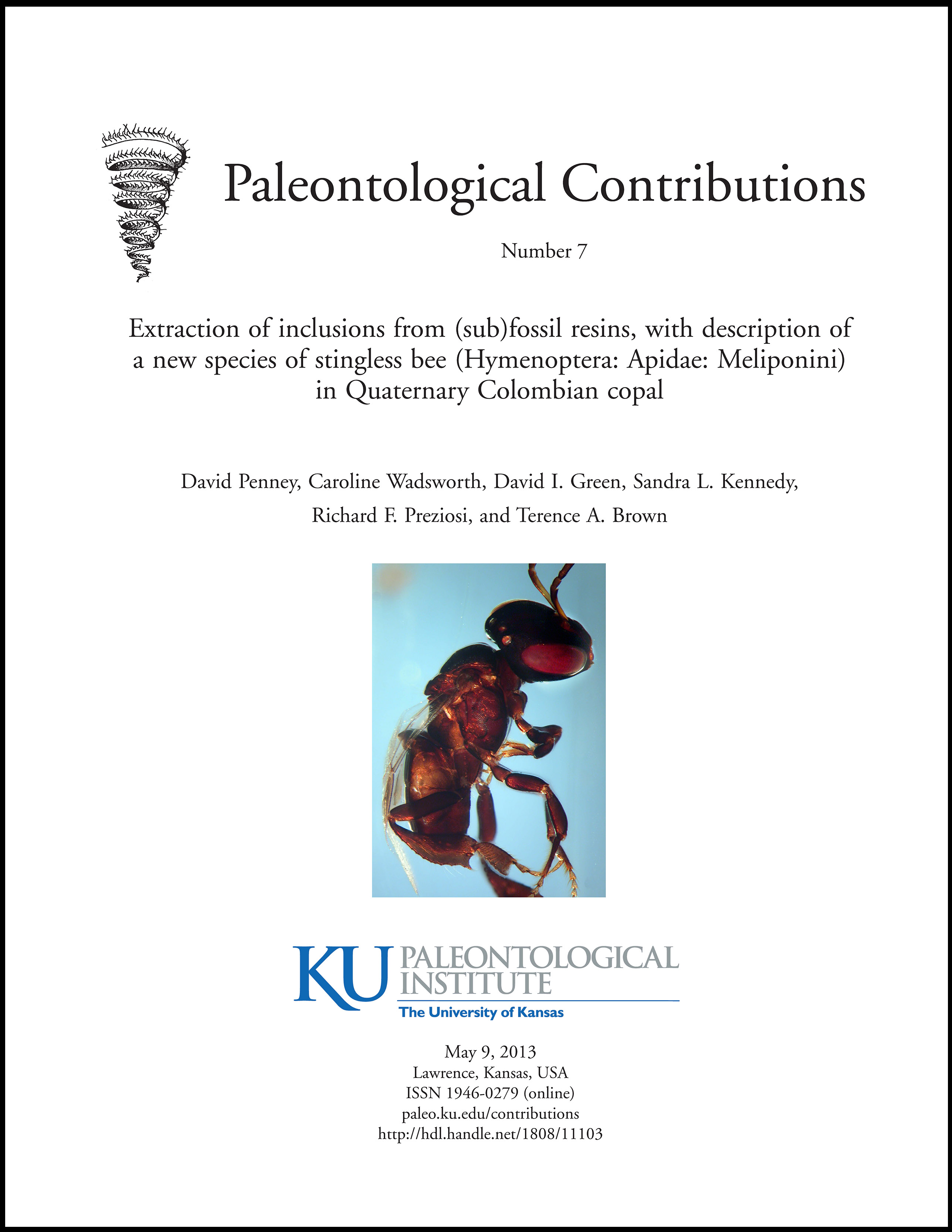Extraction of inclusions from (sub)fossil resins, with description of a new species of stingless bee (Hymenoptera: Apidae: Meliponini) in Quaternary Colombian copal
DOI:
https://doi.org/10.17161/PC.1808.11103Abstract
Amber and copal are renowned for preserving insects and other inclusions with lifelike fidelity. However, due to their frozen-in-time nature, they are taxonomically subequal to Recent insects, which commonly require dissection in order to identify them to species level. This can be overcome to a degree through digital dissection using computed tomography, but this technique is time consuming, expensive, and not widely accessible. We attempted to dissolve inclusions out of Dominican and Baltic ambers and Quaternary Colombian copal using chloroform. Extraction of specimens from amber was unsuccessful, but we were able to extract a stingless bee from the less polymerized copal and dissect it under a microscope as if it were a recently caught insect. We were able to examine all of the features that are considered to be diagnostic for extant species, and thus our subfossil is taxonomically equivalent to a living species. The copal bee is a new species of the Trigonisca longitarsis species group (=Dolichotrigona), which is described and figured herein as Trigonisca ameliae n. sp. (Hymenoptera: Apidae). The ability to extract inclusions from (sub)fossil resins facilitates more accurate studies of Quaternary tropical forest biodiversity, in addition to molecular paleobiology and taphonomic physiochemical changes resulting from diagenetic processes following entombment in copal- and amber-forming resins. Colombian copal is radiocarbon dated within the age range <60 (postbomb) to 10,612 ± 62 years old.
Downloads
Published
Issue
Section
License
Copyright (c) 2013 David Penney, Caroline Wadsworth, David I. Green, Sandra L. Kennedy, Richard F. Preziosi, Terence A. Brown

This work is licensed under a Creative Commons Attribution 4.0 International License.
- Authors retain copyright and the works are licensed under a Creative Commons Attribution 4.0 License that allows others to share the work with an acknowledgement of the work's authorship and initial publication in this journal.
- Authors are permitted and encouraged to post their work online (e.g., in institutional repositories or on their website) prior to and during the submission process, as it can lead to productive exchanges, as well as earlier and greater citation of published work (See The Effect of Open Access)


